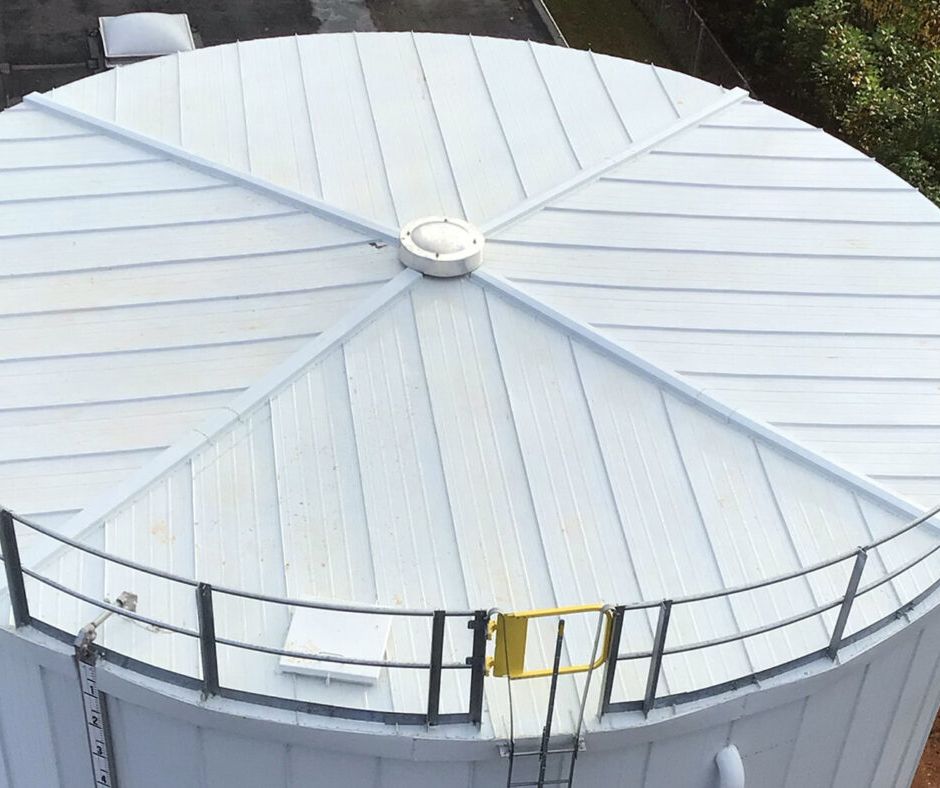Fire suppression tanks play a critical role in protecting properties and saving lives by providing a reliable source of water for firefighting efforts. In this comprehensive guide, we’ll explore the importance of fire suppression tanks, their key components, installation considerations, maintenance practices, and environmental benefits.
Understanding Fire Suppression Tanks: A Lifesaving Investment
Fire suppression tanks are specially designed to store large volumes of water for use in firefighting operations. This section delves into the significance of fire suppression tanks in safeguarding properties against the devastating effects of fires and the essential role they play in enhancing fire safety measures.
- Emergency Preparedness: Fire suppression tanks serve as a crucial component of emergency preparedness plans, providing firefighters with immediate access to water for extinguishing fires and preventing their spread.
- Reliable Water Supply: During emergencies or situations where municipal water supply may be compromised, fire suppression tanks ensure a reliable source of water for firefighting activities, minimizing response times and maximizing effectiveness.
- Property Protection: By investing in fire suppression tanks, property owners can significantly reduce the risk of property damage and loss due to fires, safeguarding their assets and preserving their livelihoods.
Components of Fire Suppression Tanks: Design and Functionality
Fire suppression tanks consist of various components that work together to ensure optimal performance and functionality. This section explores the key components of fire suppression tanks and their respective roles in storing and delivering water for firefighting purposes.
- Tank Body: The tank body serves as the primary storage vessel for water and is typically constructed from durable materials such as steel, concrete, or fiberglass to withstand external forces and maintain structural integrity.
- Inlet and Outlet Ports: Inlet and outlet ports facilitate the inflow and outflow of water to and from the tank, allowing for efficient filling and distribution of water during firefighting operations.
- Overflow and Ventilation Systems: Overflow and ventilation systems prevent overfilling of the tank and ensure proper ventilation, preventing the buildup of gases and maintaining water quality.
- Pump and Piping Systems: Pump and piping systems enable water to be drawn from the tank and distributed to firefighting equipment, such as hoses, nozzles, and sprinkler systems, providing firefighters with the necessary resources to combat fires effectively.

Installation Considerations for Fire Suppression Tanks: Ensuring Optimal Performance
Proper installation is crucial for maximizing the effectiveness and longevity of fire suppression tanks. This section highlights key considerations and best practices for installing fire suppression tanks to ensure optimal performance and compliance with regulatory requirements.
- Site Selection: Choose a suitable location for installing the fire suppression tank, considering factors such as accessibility, proximity to water sources, terrain, and potential hazards. Ensure compliance with local building codes and zoning regulations.
- Foundation Preparation: Prepare a stable and level foundation for the tank to prevent settling, shifting, or structural damage over time. Depending on the tank’s size and weight, the foundation may require concrete footings, gravel beds, or other support structures.
- Tank Elevation: Determine the appropriate elevation for the tank to ensure adequate water pressure and flow rates for firefighting operations. Consider factors such as building height, terrain elevation, and hydraulic calculations when determining the tank’s elevation relative to firefighting equipment and water distribution systems.
Maintenance Practices for Fire Suppression Tanks: Preserving Performance and Reliability
Regular maintenance is essential for preserving the performance and reliability of fire suppression tanks. This section outlines essential maintenance practices and inspection procedures to ensure the proper functioning of fire suppression tanks in emergencies.
- Inspection and Testing: Conduct routine inspections of the tank, piping, valves, and associated equipment to identify any signs of damage, corrosion, or malfunction. Test the tank’s integrity and functionality periodically to verify its ability to hold water and deliver it effectively during firefighting operations.
- Cleaning and Flushing: Regularly clean and flush the tank to remove sediment, debris, and microbial growth that can accumulate over time and impair water quality. Consider implementing a schedule for tank cleaning and maintenance based on usage and environmental conditions.
- Equipment Checks: Check the condition of firefighting equipment, such as pumps, hoses, nozzles, and valves, to ensure proper operation and readiness. Repair or replace any damaged or malfunctioning equipment promptly to maintain firefighting effectiveness.
- Coating and Corrosion Protection: Inspect the tank’s interior and exterior surfaces for signs of corrosion, rust, or coating degradation. Apply protective coatings or linings as needed to prevent corrosion and extend the tank’s lifespan.
Types of Fire Suppression Tanks: Choosing the Right Option
There are several types of fire suppression tanks available, each with unique features and advantages. This section explores different types of fire suppression tanks and their suitability for various applications.
- Above-Ground Tanks: These tanks are installed above ground and are suitable for locations where space is available and accessibility is not an issue. They offer ease of installation and maintenance.
- Underground Tanks: Underground tanks are buried beneath the ground surface and are ideal for locations where space is limited or aesthetics are a concern. They provide discreet storage while still offering ample water capacity.
- Elevated Tanks: Elevated tanks are mounted on a support structure or tower to increase water pressure and distribution efficiency. They are commonly used in areas with uneven terrain or where elevated water pressure is necessary.
Fire Suppression Tank Accessories: Enhancing Functionality and Safety
Various accessories can be installed to enhance the functionality and safety of fire suppression tanks. This section discusses common accessories and their roles in optimizing tank performance.
- Tank Gauges: Tank gauges provide real-time monitoring of water levels inside the tank, allowing operators to track water usage and anticipate the need for refills. They help prevent overflows and ensure that an adequate water supply is always available.
- Overflow Alarms: Overflow alarms alert operators when the tank reaches its maximum capacity, preventing overfilling and potential water wastage. They provide an additional layer of protection against water spillage and property damage.
- Lightning Protection Systems: Lightning protection systems are installed to safeguard fire suppression tanks from lightning strikes, which can cause damage to tank components and pose safety risks. They divert electrical currents away from the tank, reducing the likelihood of damage during thunderstorms.
Environmental Benefits of Fire Suppression Tanks: Promoting Sustainability
In addition to their primary function of fire protection, fire suppression tanks offer environmental benefits that contribute to sustainability and resilience. This section explores the environmental advantages of fire suppression tanks and their role in mitigating environmental impacts.
- Water Conservation: Fire suppression tanks promote water conservation by providing an alternative source of water for firefighting that reduces reliance on municipal water supplies. This helps conserve freshwater resources and reduces the strain on water treatment facilities.
- Habitat Protection: By reducing the risk of wildfires and minimizing the extent of fire damage, fire suppression tanks help protect natural habitats and ecosystems from destruction. This is especially important in ecologically sensitive areas with diverse flora and fauna.
- Carbon Emissions Reduction: Fire suppression tanks contribute to carbon emissions reduction by supporting efficient firefighting operations that minimize the duration and intensity of fires. This helps mitigate the release of greenhouse gases and air pollutants associated with wildfires.
Conclusion:
Fire suppression tanks are indispensable assets for protecting properties and communities from the devastating effects of fires. With their ability to provide a reliable source of water for firefighting operations, fire suppression tanks play a crucial role in enhancing fire safety measures and minimizing property damage. By understanding the different types of fire suppression tanks, incorporating essential accessories, and recognizing their environmental benefits, property owners can make informed decisions and invest in fire suppression systems that enhance safety, resilience, and sustainability. Fire suppression tanks are not just tools for firefighting but essential components of comprehensive fire protection strategies that safeguard lives, properties, and natural resources. Additionally, integrating Storage Tanks into fire suppression systems can further enhance their capacity and efficiency in combating fires, ensuring optimal performance and protection.


